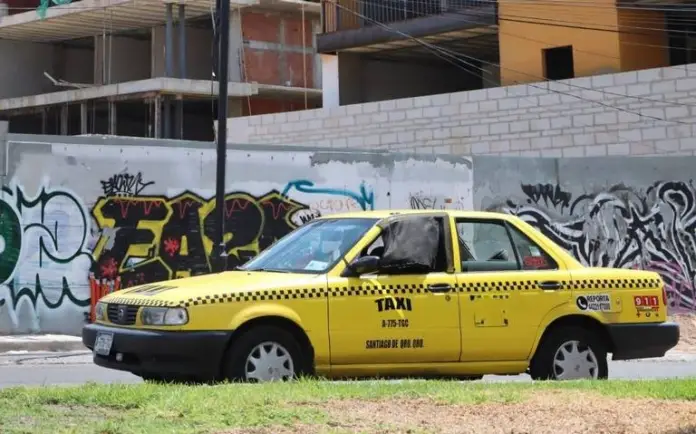
The use of the taximeter will be the “coup de grace” for many taxi drivers, who argued that if this charging scheme is implemented, their earnings could decrease by up to 30 percent, in addition to the economic loss that they claim has been caused by the service of the platforms, the Qrobús system and the yellow buses with a free system.
This was commented by a group of drivers, who have their base near the Escobedo Market. They stated that this is the situation for them, because they have to pay the bill of 300 pesos a day, plus 500 for fuel, food and to take money home.
Junk taxis circulate with permission from the AMEQ
In addition, they are awaiting the payment of the insurance for damages to third parties, which is 3,500 pesos a year, which does not cover them, but other people who could be affected in a traffic accident. To this we must add the payment of the vehicle registration fee, which, according to what they said, will be approximately 900 pesos, and on top of that they must comply with their taxes.
“How is it that they want to put in taximeters, when people have not asked for them or complained, because they are used to doing business with us. If they put in a taximeter or an application that did that function, it will harm many of us, because sometimes we take home 200 pesos,” said José, who has been in the business for nearly 30 years and who has seen the growth of the city.
Upon hearing José speak, his colleagues approached them interested to express what they have experienced as drivers. David mentioned that there are more and more economic complications, because when they set up a base they are waiting for a person to arrive and request the service.
Cleaning up junk taxis: 378 units will not pass inspection
“In my job, the only thing I am afraid of is facing competition from the platforms, because since they arrived we have practically had a drop in work. Before, it was enough for many things, but now every day is like a challenge to see how much we get. And then without medical service or benefits, where are we going to end up,” he said.
It should be said that, in 2019, the Querétaro Institute of Transportation (IQT), which is now the Mobility Agency of the State of Querétaro (AMEQ), had an attempt to implement the Qrotaxi scheme through an application that was going to work through a QR code that the operators carried in their units.
Some versions, such as that of the operators themselves, assure that the taxi drivers stopped using it precisely because it was not compatible with what they wanted to charge and earn; that is, it did not mark the rates they wanted.
Some people who remember that situation, said that the drivers gradually removed the QR code so that people would not capture them with their phones, and therefore decided to return to the previous scheme of negotiating with passengers. They added that the taxi drivers used the excuse that the Qrotaxi application did not work properly.
“Many people did not know about the application, because they lacked publicity and then the drivers at that time opposed it, because the attempt died very quickly,” said a reader, about this service that had been planned to start on October 1, 2019.
In the document that the Querétaro Institute of Transportation published at the time, the characteristics that cell phones should have were specified: Android system 4.3 or higher, memory of at least 1 mega, internet connection with a minimum plan, as well as having a camera and GPS.
“An older adult who needed to take a taxi would not understand these characteristics, because those who have one barely know how to use a cell phone,” according to Ángel, who lives in the capital and who also remembers that scheme that was left up in the air.
At that time, the IQT published that: “As of October 1, 2019, the use of the taximeter is mandatory, in accordance with the provisions of the Mobility Law for the State of Querétaro in the first transitional article and articles 173, 196.”
Source: diariodequeretaro






